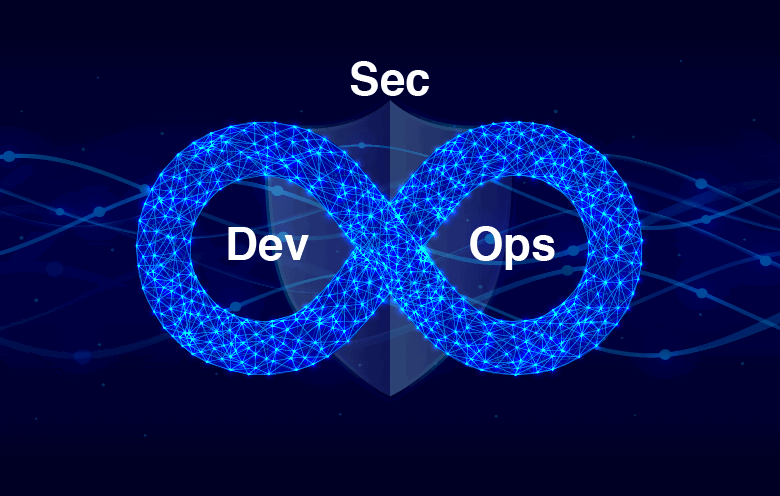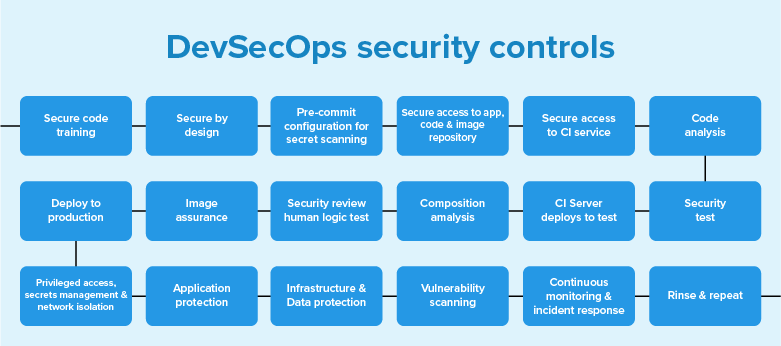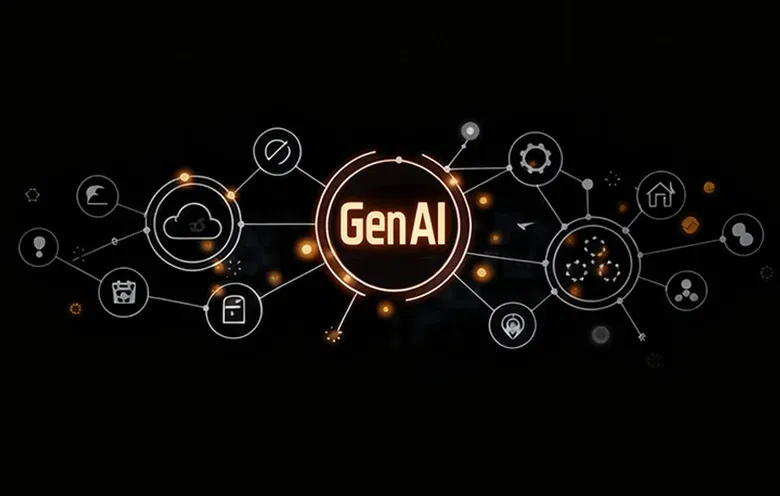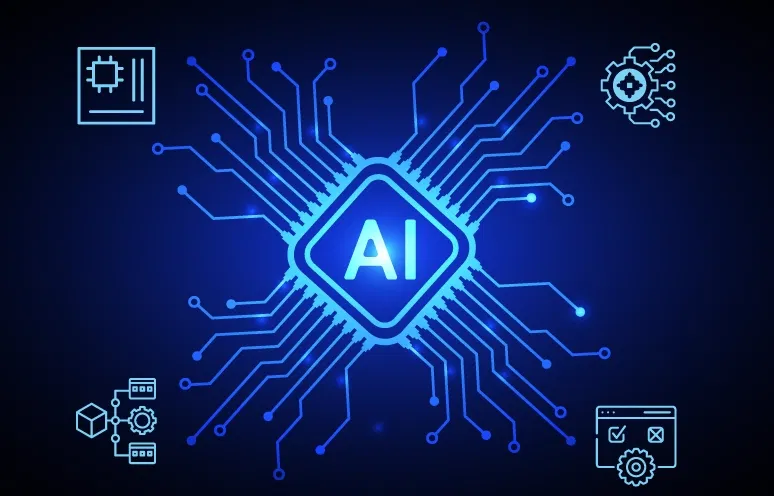We are on the verge of a new digital era powered by artificial intelligence (AI), which will bring unimaginable possibilities and change. Early 2023 saw pivotal AI trends, such as large language models, reshaping our daily lives drastically. Businesses shift to AI-first strategies, and product companies ship code faster than ever. The cumulative impact of years of digital revolution accelerates the adoption of generative AI (GenAI).
By the end of this decade, the world will not be the same as it is now. This rapid rate of genAI adoption is not without risk, though. The attack surface expands as we rush toward the AI horizon, raising cybersecurity risks that conventional defenses cannot handle.
Did you know

These facts highlight the urgent need for solid security plans and businesses to act quickly. Cyberattack defense is now a requirement, not an option, and software development and security operations (DevSecOps) are the best course of action.
Imagine
Imagine a future where GenAI becomes a powerful ally in DevSecOps, anticipates vulnerabilities, and manages threats in real-time. This is the promise of generative AI in DevSecOps. As organizations strive for faster delivery cycles without compromising security, the adoption of generative AI in DevSecOps solutions becomes increasingly attractive.
However, as organizations carry on with this rush of enthusiasm, various questions still need to be answered: will generative AI take over DevSecOps, or will it serve as a force multiplier, increasing human potential? This article attempts to answer these questions by discussing the transformative impact of generative Al in DevSecOps.
Software development projects typically last 4 to 6 months, with debugging and testing consuming the most time. Generative AI can reduce debugging and testing time by up to 70%, benefiting DevSecOps teams and businesses money.
Source: GoodFirms
What is DevSecOps?
DevSecOps is an approach to software development that incorporates security measures into every phase of the software development lifecycle (SDLC). This approach emphasizes collaboration among development, security, and operations teams to ensure that security is a shared responsibility and is considered from the project’s outset. Following are a few benefits of adopting the DevSecOps framework:
Collaborative approach: DevSecOps fosters a culture where security is everyone’s concern, not just the security team’s. It encourages developers, operations staff, and security professionals to work together to build and maintain secure software.
Security integration: By integrating security measures early in the SDLC, DevSecOps helps identify and address vulnerabilities sooner, which can reduce the costs and time associated with fixing security issues later.
Automation: DevSecOps leverages automation to incorporate security testing and compliance checks into the continuous integration and deployment pipelines, enabling faster and more secure code releases.
Continuous security: The practice promotes ongoing security monitoring and threat detection throughout the application’s lifecycle, ensuring security is maintained even after deployment.
DevSecOps represents a shift from traditional software development methods by embedding security into the DNA of the application development process, thus delivering secure software at the speed of DevOps.
How organizations realize security is needed for DevOps
Recognizing the paramount importance of security in the DevOps landscape, DevSecOps emerges as a natural evolution. It integrates security measures into every facet of the development lifecycle. This transformative approach transcends mere collaboration. It forges a seamless fusion between development, operations, and security teams.
The DevSecOps approach detects vulnerability early and proactively mitigates risks. Its rise underscores the industry’s acknowledgment that security is not merely a checkbox but an integral part of the process. In today’s fast-paced development environment, shipping code at accelerated speeds is imperative for organizations to remain competitive. To do so while also keeping SDLC and systems secure, organizations need DevSecOps.
DevSecOps is indispensable for several reasons:
- The exponential surge in cyber attacks makes security a non-negotiable aspect rather than an afterthought.
- Breaches wreck companies and erode consumer trust, highlighting the criticality of robust security measures.
- The rapid pace of software development amplifies the threat landscape exponentially if DevSecOps automation is not integrated into development pipelines.
- Relying solely on manual security processes like penetration testing results in significant delays and friction. It exacerbates mean time to detect (MTTD) and mean time to respond (MTTR).
- DevSecOps provides guardrails as organizations adopt new platforms and architectures, such as cloud, containers, microservices, AI, and Web3.
- For highly regulated industries like finance and healthcare, DevSecOps is essential for balancing compliance with the imperative for software delivery.
- Startups disrupting the technology sector benefit immensely from implementing ‘secure by design’ principles from inception, averting catastrophic breaches.
A key metric for cybersecurity teams is minimizing MTTD and MTTR to security incidents. The following statistics shed light on the significance of these metrics:
- The average data breach cost reached $4.45 million, with an average time to detect a breach being 287 days.
- The average cost of a data breach surged from $3.86 to $4.45 million from 2020 to 2023.
- According to the SANS Incident Response survey, over 50% of companies have an MTTR of 30 days or less.
By automating security testing, continuous monitoring, and collaboration between teams, DevSecOps empowers organizations to detect and respond to security threats more efficiently. Consequently, it reduces MTTD and MTTR. That is why organizations need security in their DevOps workflows.
In essence, DevSecOps ensures that your digital future is secure and serves as a catalyst for growth and progress. As generative AI becomes increasingly popular and is used in almost every industry, it is helpful to realize how it can prove to be a competitive advantage in DevSecOps.
Suggested: Want to know how DevSecOps can help your business reduce security risks?
Why integrate Generative AI in DevSecOps solutions
Integrating security into DevOps workflows has become paramount in this era of escalating cyber threats. DevSecOps solutions emphasize a proactive approach to security. The approach integrates security practices throughout the software development lifecycle. Several statistics on data breach highlight the financial and reputational risks associated with security vulnerabilities. That’s precisely why integrating generative AI in DevSecOps solutions adds value.
By implementing genAI-enabled DevSecOps automation throughout the SDLC, businesses can detect and remediate vulnerabilities early, minimizing the risk of security breaches. Further, generative AI in DevSecOps enables real-time threat intelligence and anomaly detection, empowering businesses to identify and mitigate security incidents before they escalate.
Suggested: Are you curious about how implementing a DevSecOps pipeline can enhance your software quality?
How generative AI transforms DevSecOps
The DevSecOps framework integrates security practices and controls throughout the software development lifecycle. Traditionally, businesses have introduced security controls later, once the application or product is ready. Organizations can use generative AI in DevSecOps practices to ensure security in the software lifecycle from the ground up.
The following image explains the security controls in the DevSecOps framework.
Planning and design: Enhancing security with generative AI
Robust planning lies at the heart of a secure development process. During the planning and design phase, GenAI plays a crucial role by analyzing vast datasets and learning from historical patterns. When combined with Generative AI, tools like ThreatModeler and Microsoft Threat Modeling Tool identify security requirements from the inception. It ensures a security-centered software development journey.
Development: Code quality and security
Security in coding is no longer an afterthought. Generative AI models trained on vast code repositories automatically identify potential code smells, security vulnerabilities, and best practice violations. Thus, it reduces manual effort during code reviews and ensures higher-quality code.
Continuous integration (CI): Early detection with GenAI
Early detection remains crucial for efficient security management. AI-powered testing tools autonomously generate diverse test cases, identifying edge cases and vulnerabilities that traditional testing might miss. This leads to improved test coverage and better detection of security flaws and performance bottlenecks.
Continuous deployment (CD): Secure transition with GenAI
Generative AI ensures a seamless and secure transition to production during the continuous deployment phase. Generative AI scans codebases, identifies vulnerabilities, and suggests appropriate patches. This accelerates the patching process, reducing the exposure window to potential threats.
Monitoring and operation: Real-time anomaly detection
Real-time responsiveness is critical. Generative AI continuously monitors system behavior, user activity, and network traffic. It promptly identifies suspicious patterns and potential security breaches, enhancing incident response.
The fusion of generative AI in DevSecOps transforms software development and cybersecurity practices. From automated testing, code analysis, and review to secure deployment and real-time monitoring, GenAI revolutionizes the DevSecOps landscape.
The future of DevSecOps
Generative AI holds immense promise for DevSecOps solutions. While challenges remain, organizations that embrace this technology stand to gain a competitive edge. As Generative AI matures, it will continue to shape the landscape of secure software development and cybersecurity. The question remains: Will Generative AI take over DevSecOps? Perhaps not entirely, but it will undoubtedly play a pivotal role in its evolution.
In summary, DevSecOps practitioners should harness generative AI as a valuable asset – one that enhances security, automates tasks, improves collaboration, and facilitates continuous learning. By doing so, they can navigate the complex intersection of development, security, and operations with confidence.




